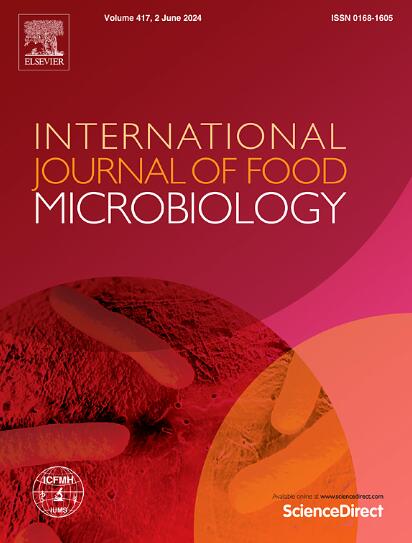Recent insights on the multifaceted roles of wooden tools in cheese-making: A review of their impacts on safety and final traits of traditional cheeses
IF 5
1区 农林科学
Q1 FOOD SCIENCE & TECHNOLOGY
International journal of food microbiology
Pub Date : 2025-03-25
DOI:10.1016/j.ijfoodmicro.2025.111179
引用次数: 0
Abstract
The present review provides an overview of the role of wooden tools in cheese-making production, with a particular focus on their impact on the authenticity and biodiversity of typical and traditional cheeses. Specifically, wooden tools (such as vats, shelves, or tables) are thought to be important in the production of traditional cheese and cannot be replaced with substitute materials like plastic or stainless steel without changing the final characteristics of the cheeses. Despite the rigorous hygienic regulations, wooden tools are still indispensable in many areas and required for some Protected Designation of Origin (PDO) cheeses. These wooden tools promote the growth of biofilms, which are primarily made up of pro-technological microorganisms and add to the unique sensory qualities of traditional cheeses. They also improve product safety by acting as a natural barrier against pathogenic microorganisms. Such wooden tools facilitate the growth of biofilms mainly constituted by pro-technological microorganisms that contribute to the distinctive sensory traits of traditional cheeses and enhance the safety of final products by providing a natural barrier against pathogenic microorganisms. Recently, several studies have focused on wooden-associated biofilms with the final aim to optimize their structure, enhance their robustness, and explore the dynamics of microbial communities between wood and cheese in the most relevant production steps to further improve both the safety and quality of traditional—type cheeses.

求助全文
约1分钟内获得全文
求助全文
来源期刊
CiteScore
10.40
自引率
5.60%
发文量
322
审稿时长
65 days
期刊介绍:
The International Journal of Food Microbiology publishes papers dealing with all aspects of food microbiology. Articles must present information that is novel, has high impact and interest, and is of high scientific quality. They should provide scientific or technological advancement in the specific field of interest of the journal and enhance its strong international reputation. Preliminary or confirmatory results as well as contributions not strictly related to food microbiology will not be considered for publication.

 求助内容:
求助内容: 应助结果提醒方式:
应助结果提醒方式:


